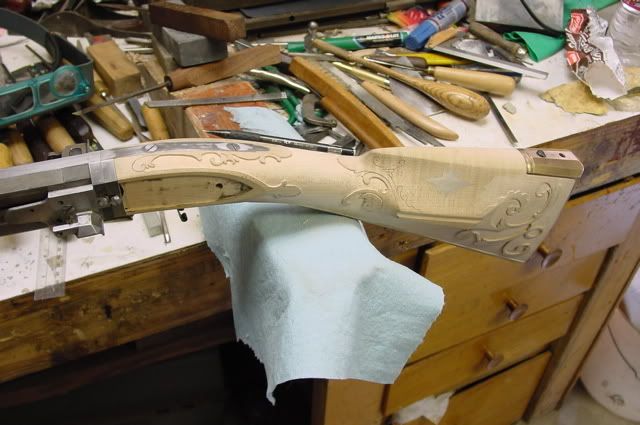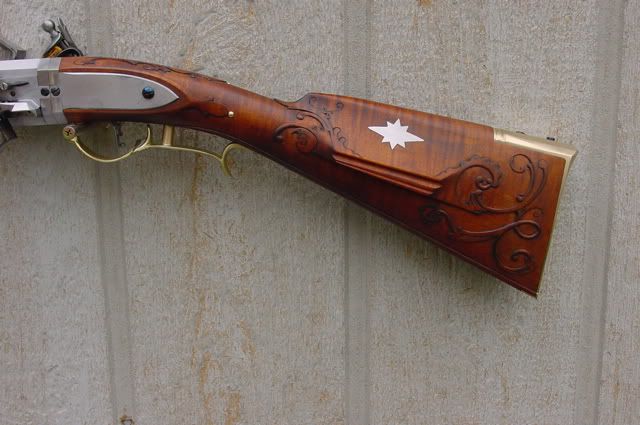ohio ramrod said:
The simple fact is very few "everyday guns " from that time period survived. I believe most had some type of carvings but the guns we see are the ones that were "special".
Note that this is MY view. Yours may vary.
How do we determine "everyday"?
What you owned and how you dressed determined your station in life. A man with a well decorated rifle is not going to hang it on the wall and use something that looks like a blacksmith restock.
If he did people would wonder why.
What you had and displayed indicated who you were in society.
Note the Thomas Rifle, Rifles of Colonial America #121. Fully carved, engraved patchbox, wire inlay. It was being used in combat in the Revolution when captured by the British and taken as a trophy back the England.
Want a pre-rev war rifle that is "plain" see RCA #131. The Haymaker rifle whose owner was killed in 1774 while on a survey trip. I consider this to be a "plain" rifle. This style rifle could easily date to the 1760s. I would call this an everyday rifle, ti sure was not a wall hanger. The owner had it with him, on the job so to speak, when he was killed according to the story.
Carving of this type would cost almost nothing and makes the rifle look better. The BARREL is the high priced part. Watch the video The Gunsmith of Williamsburg".
Moulding of the upper forend was done when it was shaped. It took no more work to mould than the shape if the smith has a plane or scratch stock shaped for it the moulding is cut automatically. It costs nothing really.
The Antes Swivel is a very expensive rifle, but it was used heavily and never converted to percussion. Its RCA #54. Heavily carved, engraved brass, moulded rod pipes. The amount of wear indicates years of hard use, a lifetime perhaps or more.
Or go to
americanhistoricsrvices.com and look to "antigue rifles".
There is an early rifle, to me meaning an early fully evolved American rifle, circa 1770, by Resor with all bells and whistles in "Steel Canvas" which has a lot of color photos of Kentucky rifles. Its mint which is very unusual even for "fancy guns".
Even the Indian trade rifles of the time have a patch box and SOME carving. See "British Military Flintlock Rifles" by Bailey. Its how it was done. Its what was expected. Even in Indian Trade rifles the low end guns were not popular and did not sell well.
This tells me the settlers documented (see "British Military Flintlock Rifles") as selling their rifles to the natives "at monstrous price" in the 1750s-60s were not selling the plain rifles everyone is thinking of when "everyday rifle" is mentioned. Apparently the natives did not want "plain" rifles.
If they could sell their rifle for double then they could buy a nicer/new rifle AND something useful around the farm why not?
Dan







